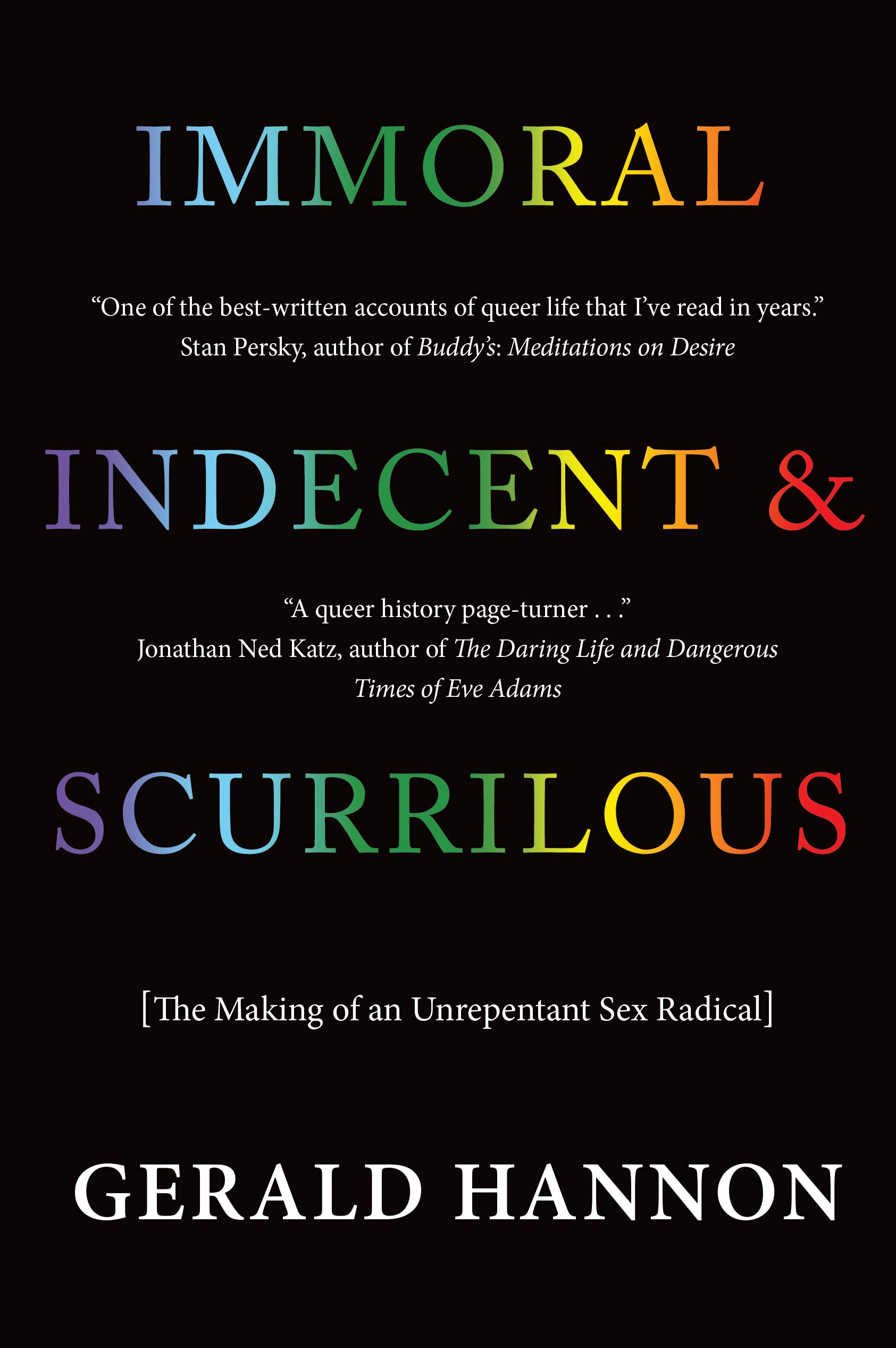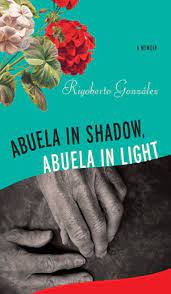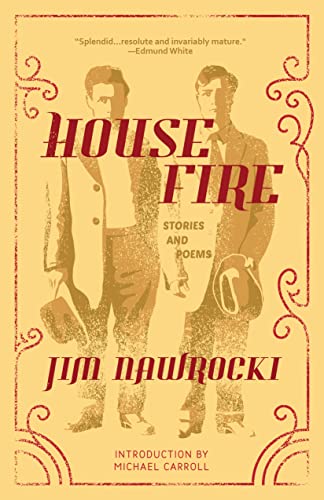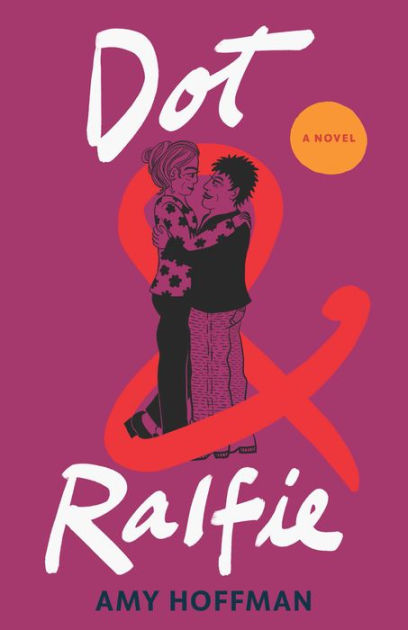This is the most recent of several memoirs by poet and critic Rigoberto González, whose Autobiography of My Hungers was reviewed in the Sept.-Oct. 2013 issue of this magazine. As with his previous memoirs, González avoids repetition by focusing on specific individuals in his large Mexican-American family. In this case, it’s his abuela (grandmother), a member of the Purépecha tribe from Michoacán, Mexico. He remembers her as loving and caring, though not at all demonstrative. He and his brother were sent to live with her and her husband (a physically violent man) in California, and he spent most of his adolescence with them, often traveling back to Michoacán. There he was warned against “predatory homosexuals” lurking at night. González says that he never found any; the only homosexual out there was himself.
Along with other members of his family, he was subjected to sexual abuse when growing up. He knew that an uncle was one of the perpetrators, but a conspiracy of silence engulfed the family. González was able to get away to the University of California-Riverside, where he developed an entirely new persona, joined a folkloric dance company, and believed he was bisexual. Meanwhile, his grandmother, after being widowed, had a close relationship, perhaps an intimate one, with another woman. González reflects on how she had defied gender norms throughout her life, and in old age was living out her destiny.
Martha E. Stone
 PLACES OF TENDERNESS AND HEAT
PLACES OF TENDERNESS AND HEAT
The Queer Milieu of Fin-de-Siècle St. Petersburg
by Olga Petri
Cornell Univ. Press. 254 pages, $48.95
Olga Petri’s new book about cruising in late 19th-century St. Petersburg, Russia, uses “historical geography”—the study of buildings, streets, squares—to bring to life a distant time and place. Cruising sites included Nevsky Prospect, the Anichkov Bridge (nicknamed “The Bridge of Eighteen Testicles” for its statues of horses and men), the Tavricheskii Gardens, the Passazh shopping arcade, and numerous public bathhouses. Mixed into the “spatial relations” are a few narratives: a man whose lover has left him goes to the police to declare him a missing person; an anonymous bureaucrat creates a dossier based on his observations on homosexual cruising; a poet-novelist-flâneur named Mikhail Kuzmin keeps a diary of his wanderings.
The result is a portrait of St. Petersburg that’s reminiscent of London and Paris in the same period. St. Petersburg had its homosexual underground composed of johns and hustlers, bathhouse attendants and soldiers. Homosexuals wore red, or a yellow flower, to signify their tastes. They cruised in various locations that the police were well aware of. Policemen and pederasts lived in a kind of symbiosis—the former sometimes even taking the latter’s part to quash blackmail attempts. They rarely prosecuted anyone for sodomy—because the judicial system was so slow. The result was a détente that seems to have been sensible and civilized.
But be warned: this is not a book for the general reader. The romantic subject matter is wrapped in a post-Foucaultian vocabulary that may leave some readers wishing they could skip the analysis and just read the dossiers, the diaries, and the novel written by Kuzmin (titled Wings).
Andrew Holleran
Jim Nawrocki, whose book reviews appeared in every issue of this magazine for many years, passed away from cancer in 2018. This slim volume gathers his stories and poems into a single volume, and it’s hard not to view his work through the lens of his untimely demise. (His husband Jason W. Wong was instrumental in assembling this volume.)
Nawrocki’s stories are gentle and erudite explorations of loss and change, many of them set in the Bay Area. Stories like “Brava, Cassiopeia” and “City of Memory” explore the healing power of art and adapting to an ever-changing world as one ages. Another especially affecting story, “Room 410,” tells the tale of an alienated person so troubled by grief that he takes his own life. A few stories fail to ground themselves and establish a tone, and one wonders how Nawrocki might have tinkered with them if given more time. Many of the poems are both strong and lovely, addressing themes of loneliness and loss. Writes Nawrocki in “Infusion”: “the wet leaves [are]collaged on the infinity of dull pavement, each one/ a fiery senescence,/ a last page.”
A manuscript of his poetry was selected as the winner of the 2009 James White Poetry Prize, but for some reason it was never published. It is good to have that manuscript, as well as the stories, available at last. House Fire is a fitting title for the entire collection. After witnessing such a fire, Nawrocki imagines his own reaction if some day he found himself walking into his own “black canvas of loss.” His own disappearance at age 54 is a profound loss for the rest of us.
Dale Boyer
From the elliptical probings of Carl Phillips to Amy Lowell wrestling with nasty plants, this collection from over 200 contributors provides a broad overview of the work of LGBT poets past and present, including many well-known poets. However, with only a single offering from each, some authentic nature poets, such as Mary Oliver, seem underrepresented, while some of those included wrote only incidentally about “nature.”
While the meaning of “nature” is stretched rather thin at times, this volume includes some splendid work. Some is traditional American fare (Edna St. Vincent Millay, Emily Dickinson), some from the transitional mid-20th century (H.D., Hart Crane), and some modern poets who don’t hold back when describing the ins and outs of sex. One of the best poems is Julie R. Enszer’s “Pervert,” in which a lesbian imagines how her sexual experience with a particular woman would go, with a wrenching change of subject in the second half. This is hardly a traditional nature poem—it contains no leaves of grass nor anything green—but it’s so erotic in the best sense and so impeccably constructed that it deserves inclusion. Gerry Gomez Pearlberg’s painfully realistic “Thrush” at least mentions birds and trees, but does so by blending the fate of her friend into her knowledge of the natural world.
There are so many people publishing largely unread poetry these days that a curated collection like this allows us to discover modern poets whose voices we might not otherwise have heard. Think of it as a tease, and follow where it leads you.
Alan Contreras
Part epic love poem, part essay, Jeffery Beam’s Verdant is colored by the recollection of an idealized affair. In the series of poems, the peacefulness of the unnamed speaker’s comfortable country life is shattered by the “audible” absence of his lover. It was a relationship that even nature seemed to smile upon: blackberries “withdrew small/ daggers when we kissed near them.” As the seasons advance, he relishes the natural beauty all around him, yet registers each change in relation to his grief. When summer comes around again, his obsessive devotion bursts forth renewed (“I overwhelm the flowers as well”). Nature continues its everlasting cycle, but the speaker seems preserved in the amber of memory: “suffering alone possesses me.”
Beam’s essay reflects on his poetry’s themes and his key influences, which include Millay, Rilke, Anna Akhmatova, and Rumi. He traces a feeling of longing to what he claims is his earliest memory (nursing at his mother’s breast) and calls it “the one persistent passion that has inhabited my life.” Most interestingly, we get scraps of biographical detail that affect our reading of the poetry: In 1995, at the age of 42, Beam upended his then fifteen-year relationship by falling in love with a younger man. Although Beam dismisses it as “a long story, not worth telling here,” the mention of it suggests a need to unburden himself of something. Looking at the poetry through this lens, one catches the shadow of guilt compounding the desperation that he frequently expresses.
Michael Quinn
In Amy Hoffman’s Dot & Ralfie, we spend some delightful time with a group of aging lesbians, perhaps the most invisible of any demographic grouping. The two main characters are a long-term lesbian couple who must face the fact they’re getting older. Dot’s heart trouble and Ralfie’s destroyed knees mean they can’t easily get to and from their third floor apartment. Dot’s sister keeps trying to get them to move to a “55 or better” community. Ralfie must take a desk job after years of work on a Boston city truck. Life is changing and they’re scrambling to keep up.
Their journey is often a humorous one that deals with serious real-life issues. Most older lesbians don’t have children. Who will take care of them in their dotage? Lower-paying jobs mean retirement savings aren’t what they should be. How can they ever stop working? Their financial situation limits where they can live. These concerns are woven into a simple but engaging plot that includes wonderful details about lesbians who came of age in the ’70s and ’80s. Flannel shirts were not a joke but a clothing choice that represented independence from the straight world’s demands. It was the heyday of lesbian bars, where strong communities of dykes were formed.
Hoffman is a writer fully in command of her material, and her prose is clear and straightforward. The book’s brevity left me wanting more complexity and more adventures for the pair. A sequel would be most welcome.
Anne Laughlin
 IMMORAL, INDECENT & SCURRILOUS
IMMORAL, INDECENT & SCURRILOUS
The Making of an Unrepentant Sex Radical
by Gerald Hannon
Cormorant Books. 318 pages, $24.95
A founding member of the landmark gay and lesbian magazine The Body Politic (1971-87), journalist and activist Gerald Hannon left an epic body of work behind. He wrote an especially controversial 1977 article—which landed him and The Body Politic in a costly court battle—titled “Men Loving Boys Loving Men,” in which he drew a sympathetic portrait of pedophilia. Years later (in 1996), he would lose his teaching position at Ryerson University (now called Toronto Metropolitan University) after the homophobic daily Toronto Sun blared the headline “Ryerson Prof: I’m a Hooker” on its front page.
Hannon would go on to much mainstream success, winning numerous awards for his work in the Canadian national daily Globe & Mail and the magazine Toronto Life. He recounts all of these trials and tribulations in this memoir, in which he is entirely unapologetic and still armed with a razor-sharp wit.
But the book is capped by a sad postscript: Hannon took his own life last May (with the help of a physician, as doctor-assisted suicide is now legal in Canada) after a struggle with Parkinson’s disease. This memoir allows him to live on in his own words, a vibrant queer voice that remains as radical and transgressive as it was in the ’70s.
Matthew Hays










